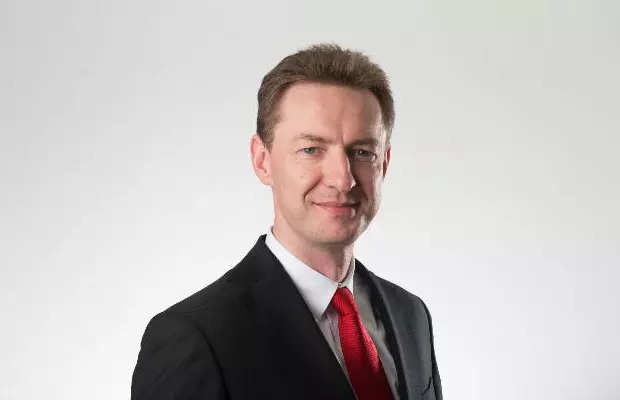
The early success of the ambitious Production Linked Incentive scheme rolled out by the government of India has enthused investors and Nexcharge–the three year old joint venture company between Exide and Leclanche, believes the market for lithium ion cell based energy storage would conservatively grow to 80 GWh. It can however grow faster merely if the government decides to ban conventional vehicles in a few major cities in the country.
In this year’s budget speech, Finance Minister Nirmala Sitharaman said the government is considering creating fossil fuel free zones in the country but did not elaborate on that point. Globally, a number of cities from Los Angeles to Rome, London, Paris, Seoul, Copenhagen and Jakarta have pledged to transition from fossil fuel to clean mobility. Cities like London have also pledged to go fully electric and have special zones that encourage only zero emission vehicles and heavily tax those on fossil fuels in order to discourage them.
“We have a conservative forecast that by 2030, there will be a market for 80 gigawatt hours of energy storage of lithium ion cells. If the Indian government bans certain older vehicles from their city centers. EV adoption, whether it’s two, three or four wheelers, would accelerate significantly and can be as much as double closer to 160 GWh if just a couple of metros do that,” says Stefan Louis, CEO, Nexcharge. “That would not be unique. A lot of cities around the world are already doing that.”
According to Niti Ayog, it would require an investment of INR 225 crore per gigawatt hour or INR 18,000 crore for 80 GWh capacity. The government’s production linked incentive scheme for advanced cell chemistries (ACC) has a corpus of INR 18,100 crore and seeks to set up manufacturing for 50 GWh capacity. The bigger challenge is whether the Indian supply chain is flexible and bold enough to exploit the opportunity in a highly competitive global scenario.
“Our suppliers will need to invest in being able to manufacture certain products at a lower cost or being able to manufacture them at all. Some components would still need to be imported,” he said. “Not only semiconductors, but also some electrical parts. We will also have to see what our competitors are doing and that’s something we have less control over. We will have to be a little bit agile during the years.”
The joint venture was formed in July 2018 to cater specifically to India’s electric vehicle and grid based energy storage market and has a plant in Gujarat with fully automated assembly lines for battery packs and modules. Only last month, Exide Industries invested an additional USD 2.68 million in the firm to raise its stake to 84.9 percent. Independently too, Exide is betting big on lithium ion technologies and is one of the bidders in the government’s ACC PLI scheme.
“Not everything needs to be developed from scratch. The smarter strategy would be to understand the requirements well enough in the global market and cherry pick what works best in India,” Louis added. “For the rest you can have license agreements where you manufacture on the license localized in India without shareholding by the technology partner. It’s a popular formula, it works well. And that would be the best way to quickly ramp up our local capabilities.”
This strategy would however, invariably mean Indian component makers would need to look at China forcing the geopolitics to come into play.
“Let’s be honest, they are the market leader whether you like it or not with 75% of the global production. The challenges are perhaps a bit more political than business right now,” he said. “I’ve personally owned companies that have had partnerships and even shareholding with the Chinese and those were very good experiences. You just have to adapt to their own set of cultural rules.”
Having invested INR 250 crore in India in the last 3 years, Nexcharge is right now in execution mode and does not foresee the need for anymore investments in the next few years. It does hope to breakeven by next financial year even as Louis maintains patience will be key and there is no rush.
“Like any company, we are working very hard to get to a breakeven situation. Investors who bet on disruptive technology always need to be patient, because the disruption takes time to overcome the incumbent technology. Luckily, we do have that kind of investors,” he said. “Maybe we can reach our breakeven next year. We will work very hard to do that. If we need a year more then so be it.”
On the question of whether solid state batteries could finally be the answer promising higher range, more stability and faster charging, Louis believes it may still take about a decade for it to be commercialised.
“The technology still has a few problems that need to be overcome. But it can be done. Maybe it will take 10 years before it is commercialized,” he said. “It will take a fortune 500 company to invest billions very similar to what Samsung, LG and Panasonic have done for lithium ion batteries. Same thing with hydrogen, unless there’s a company like Toyota which invests big and waits for 10 years, then it will be a market leader. Unless that happens. I don’t think that any technology can come in.”
The risk of a new technology emerging in the interim and upending this process laying waste to all the billions of dollars in investment like what cellular phones did to pagers in the 1990s, is high. So are the rewards for those that get it right. Batteries are the new big and shiny roulette table.
Also Read:














